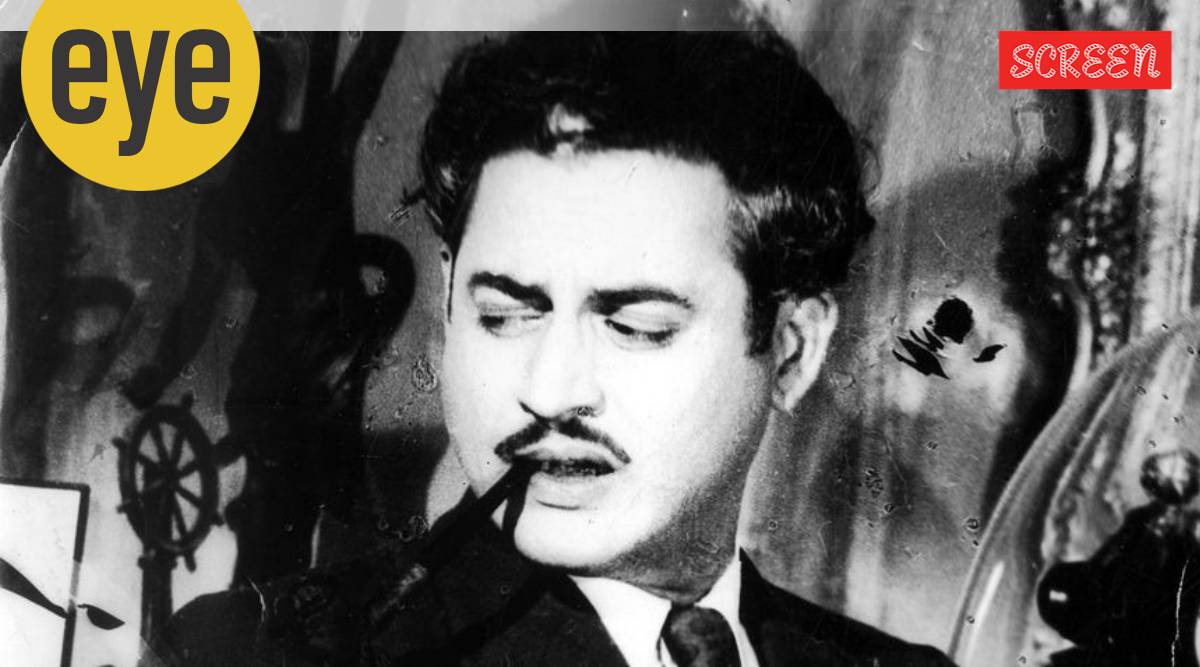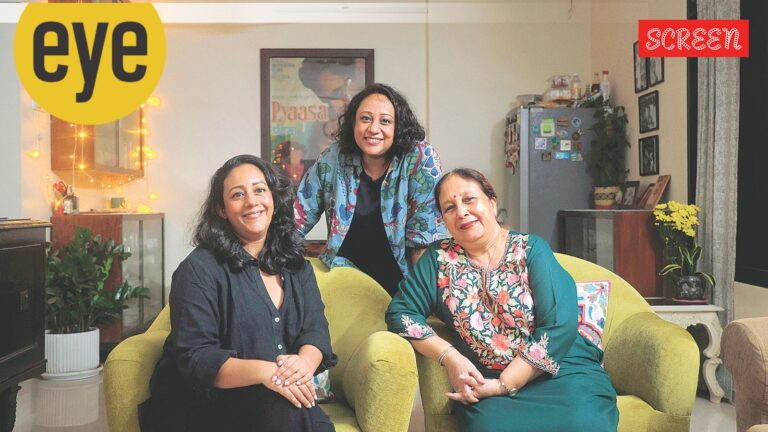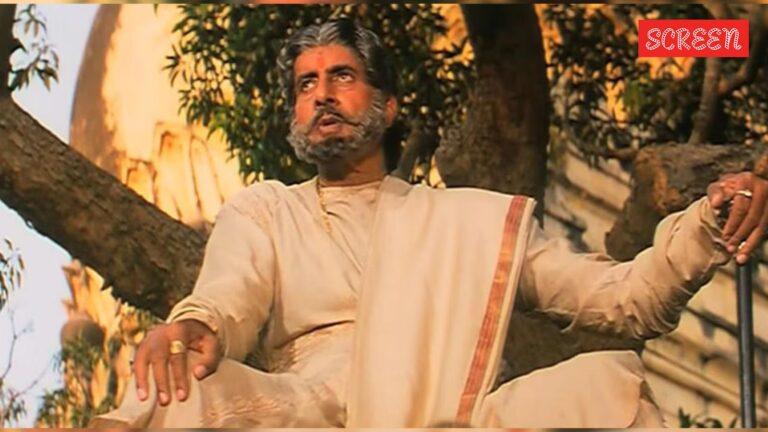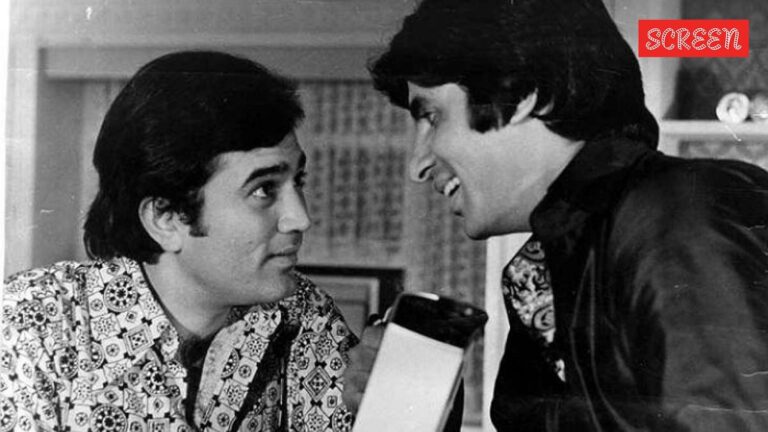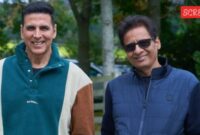Waqt ne kiya, kya haseen sitam/ Tum rahe na tum, hum rahe na hum (What a beautiful tragedy time has wrought/ You are no longer you, I am no longer me)
It took numerous drafts for poet Kaifi Azmi before he managed to capture the loneliness of filmmaker Suresh Sinha’s being as he walked through the rubble of his life in Kaagaz Ke Phool (1959). With all their vulnerability amid an emotional turning point, the two characters — Suresh and Shanti (Guru Dutt and Waheeda Rehman) — walk in and around masterfully employed light-and-shadow frames, effected by cinematographer VK Murthy. Meanwhile this background score tells the story of two people meant to be together but separated by circumstance. Bound by SD Burman’s unhurried tune and Geeta Dutt’s delicate voice, the two yearn and mourn for a love that could have been. Perhaps, not just in this film.
In Nasreen Munni Kabir’s 1989 documentary In Search of Guru Dutt, Azmi says, “The situation didn’t exist in the film. I kept writing one opening after the other and wrote many mukhdas (beginnings) but neither was he (Dutt) satisfied, nor was SD Burman and I absolutely wasn’t. Finally, Guru Dutt told me that since he isn’t able to explain what he wants, I should let it go… I said that that would be accepting defeat and that I’d like to give it another shot. That is when I wrote Waqt ne kiya…”
The film’s piece de resistance — the intimacy of which remains seminal — the song says what the characters are unable to, often the case with ditties in Dutt’s films. Azmi, perhaps, didn’t foresee then that the song was going to represent the filmmaker’s legacy for years to come. Perhaps even become somewhat autobiographical after Dutt’s death by suicide. Just before that, he gave the world a glimpse of cinema that was revolutionary yet not melodramatic, where love wouldn’t always triumph on reel, because that wasn’t real life. From his directorial debut Baazi (1951) to others that followed such as Aar Paar (1954), Mr and Mrs 55 (1955) CID (1956), Pyaasa (1957) and Kaagaz ke Phool (1959), one of their most resonant features was the music — inseparable from his cinema.
His cinema and its songs emerged in the Nehruvian era, a time when India was progressing while tending to the wounds of the Partition. He asked Sahir Ludhianvi to write for the part where he plays a poet not valued by the world he is writing about. Pyaasa which spoke of people’s hypocrisy, a nation’s poverty, corruption and bluntly asked a pertinent question: Jinhe naaz hai Hind par woh kahan hain (Where are those who are proud of India)? It presented radical commentary veiled in melody. Ludhianvi also wrote the angst-ridden Ye duniya agar mil bhi jaaye toh kya hai. His poignant verse highlighted the eternal struggle between the material and the spiritual and made it painful to bear Rafi’s heartrending crescendo Jala do ise, phook daalo ye duniya, sung by Dutt’s poet character Vijay, attending his death anniversary or the aching Jaane wo kaise log the jinke pyar ko pyar mila.
While one remembers songs from Dutt’s films for their melancholy and a sense of wistfulness, some of them also came with playful charm, most of which was brought in by Majrooh Sultanpuri, whose command over simple verses was as brilliant as his mastery of a profound Urdu nazm. These were the times when even whimsy was crafted with finesse. Who can forget Ludhianvi’s goofy Sar jo tera chakraye, with Johnny Walker as the ‘champiwala’. Dutt had seen one while sitting with Walker and asked him to imbibe his mannerisms.

Then there are the exuberant tracks like Jaane kahan mera jigar gaya ji (Mr and Mrs 55), the playful folk pieces Leke pehla pehla pyar (CID) and Kabhi aar kabhi paar (Aar Paar), the phenomenal Babuji dheera chalna (Aar Paar) and the joyous Sun sun sun sun zaalima (Aar Paar) — all of them by Sultanpuri. There was the sensuous Chaudhvi ka chand by Shakeel Badayuni from the eponymous 1960 film and the charming Bhawra bada nadaan from Sahib Bibi Aur Ghulam (1962). These songs, when one looks back, offer an antithesis to the more intense songs in Dutt’s films. One of the songs also led to an argument with Sultanpuri. The original had the line Pyar mujhko tujhse ho gaya, but Dutt wanted it replaced with Pyar humko tumse ho gaya as he thought it sounded better. “He told me, chhodiye bhi (let it go). But it was grammatically wrong. He, however, continued with what he wanted and the song did very well,” says Sultanpuri in the documentary. He adds that Dutt was particular about a few things. “One was the vocabulary, the language and the manner in which a character speaks and if it’s present in the lyrics too. He would also see that it isn’t dull and that the opening music is not too long,” says Sultanpuri.
Story continues below this ad
Dutt’s understanding of music came from two spaces – his exposure to baul performances and jatras as a child and his training at Uday Shankar’s Music and Dance Academy in Almora where he learnt alongside Zohra Sehgal, her sister Uzra Butt and Amala Shankar among others. The baul style of Aaj sajan mohe ang laga lo in Pyaasa was one such tribute. His wife and playback singer Geeta Dutt’s voice as well as that of Mohammad Rafi crooning for the disillusioned character also played a significant role in the success of the filmmaker’s music, besides of course, collaboration with composers such as SD Burman, OP Nayyar and Hemant Kumar. Decades later, the songs continue to speak truth to power.













